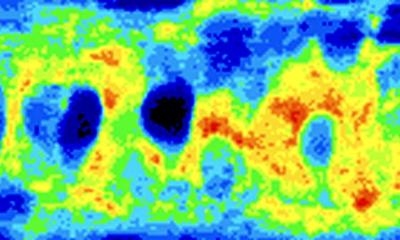News • Environmental change effects
The impact of climate change and air pollution on neurologic diseases
People with neurologic diseases like headache, dementia, multiple sclerosis (MS) and Parkinson’s disease may experience worsening symptoms due to climate change, according to a scoping review of research. The review also found that stroke may become more prevalent due to climate change.

Image source: Adobe Stock/
“Although the international community seeks to reduce global temperature rise to under 2.7ºF before 2100, irreversible environmental changes have already occurred, and as the planet warms these changes will continue to occur,” said review author Andrew Dhawan, MD, DPhil, of Cleveland Clinic in Ohio and a member of the American Academy of Neurology. “As we witness the effects of a warming planet on human health, it is imperative that neurologists anticipate how neurologic disease may change.”
For the review, which was now published in the journal Neurology, researchers looked at studies published on climate change, pollutants, temperature extremes and neurologic disease between 1990 and 2022. They identified 364 relevant studies in three categories, including 289 studies on the impact of pollution, 38 studies on extreme weather events and temperature fluctuations and 37 studies on emerging neuroinfectious diseases. They included only studies on adults, not children.
The studies highlighted the relationships between temperature variability and worsening neurologic symptoms, warming climates and tick- and mosquito-borne infections, as well as airborne pollutants and cerebrovascular disease rate and severity. The review showed extreme weather events and temperature fluctuations were associated with stroke incidence and severity, migraine headaches, hospitalization in dementia patients, and worsening of MS. It showed for emerging neuroinfectious diseases like West Nile virus, meningococcal meningitis and tick-borne encephalitis, climate change expanded the favorable conditions beyond the traditional geographic areas, and these diseases carried by animals and insects pose the risk of disease in new populations.

Image source: Adobe Stock/Orapun
The review also showed exposure to airborne pollutants, especially nitrates and fine particulate matter, also known as PM 2.5, pollutant particles of less than 2.5 microns in diameter, was associated with stroke incidence and severity, headaches, dementia risk, Parkinson’s disease, and worsening of MS. “Climate change poses many challenges for humanity, some of which are not well-studied,” said Dhawan. “For example, our review did not find any articles related to effects on neurologic health from food and water insecurity, yet these are clearly linked to neurologic health and climate change. More studies are needed on ways to reduce neuroinfectious disease transmission, how air pollution affects the nervous system, and how to improve delivery of neurologic care in the face of climate-related disruptions.” A limitation is that the studies were conducted in resource-rich regions of the world, suggesting that the results may not apply in regions with fewer resources where such changes may be even more likely to occur.
Source: American Academy of Neurology
18.11.2022











